March 21, 2018 -- The development of high performance liquid chromatography (HPLC) has created a powerful tool in the science space. HPLC technologies can be used in a number of applications, but a growing space is in clinical diagnostics
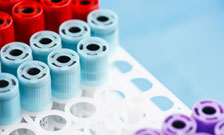
The technique contains a pumping device that moves pressurized liquid containing the sample through a column with adsorbent material. Each component interacts with the material differently thus separation occurs as they flow out of the column. Today’s focus will be on the HPLC method for hemoglobin A1c measurement followed by an overview of preparative HPLC.
Clinical HPLC systems are application-specific systems designed to quantify amounts of glycated hemoglobin, know as HbA1c. HbA1c is a biomarker for blood glucose levels over a prolonged period of time. The great benefit of HbA1c testing is one does not need to fast beforehand, ensuring higher patient compliance with testing requirements and improved testing accuracy. HPLC is used for hemoglobin analysis, as HbA1c must be partitioned from blood hemoglobin as a whole to accurately measure blood glucose. Consequently, some clinical HPLC units may also perform multiple hemoglobin or other blood related diagnostic assays simultaneously. These assays can include ascorbic acid assays, B-vitamin testing, amino acid analysis, and β-thalassemia, among many others.
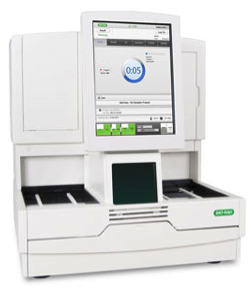
In order to perform the analysis, whole blood samples are placed in an autosampler, and then the sample is loaded on to the column. This is where HbA1c is separated from other hemoglobin constituents using an ion exchange, cation exchange or boronate affinity column inside of the system. The columns and run conditions used within these systems are designed to generate rapid results. Chromatograms showing the whole blood content of HbA1c and other hemoglobin components are generally available within 3-5 minutes on most systems. Typically, these chromatograms are then rendered as a ratio of glycated HbA1c to another hemoglobin component, or digitally quantified so that clinicians and patients can easily interpret them. HPLC systems are an ideal piece of equipment of a variety of clinical labs due to their small footprint, simple to use system, and fast testing speed.
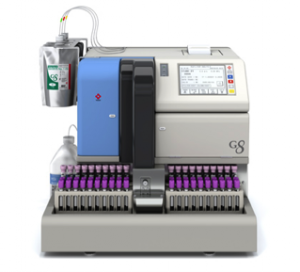
Clinical HPLCs are considered the current gold standard for HbA1c testing due to their high reproducibility and specificity. Other competing methods of HbA1c determination include enzymatic methods and immunoassays, which are prone to interference from other hemoglobin variants, leading to false diagnoses for diabetes or missed care opportunities. Clinical HPLC allows for accurate diagnosis and monitoring of diabetes, which is more difficult to perform correctly using other methods.
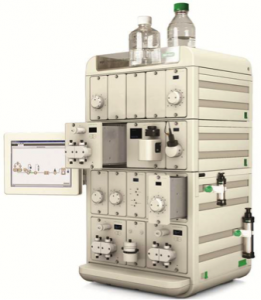
HPLC can be advantageous in the clinical setting, but I will also overview Preparative HPLC, another possibility in the HPLC realm. Preparative HPLC is another method of high-pressure liquid chromatography, however it is very different when compared to analytical HPLC. The objective of HPLC systems is to isolate, purify and collect the components of a sample. In contrast, analytical HPLCs provide qualitative and/or quantitative measurements of a sample. In addition, preparative HPLCs tend to operate at higher flow rates (10-300 mL/min), use large column IDs (10-50mm interior diameter), and employ larger particle sizes (5-10 um). In terms of pressure, prep HPLC systems operate in the range of 50-400 bar.
Typically, a preparative HPLC system consists of four subsystems; a pump, column, detector and fraction detector. HPLC pumps push the mobile phase with the dissolved analyte into the column, and then past the detector. The eluent is collected into an automated fraction collector at proposed time intervals. Prep HPLC usually employs UV, RID and/or IR detector for highly accurate separation analysis, with the most common detector being UV/Vis. Other types of detectors are gaining traction, including light scattering detectors (ELSD) and single quad mass spectrometers. At The Science Advisory Board we have found that newer models of prep HPLC systems tend to be highly modular and also provide interoperability with other lab equipment, real-time computer analysis and control (or computer-independent control) along with comprehensive database storage options.
When compared to similar technologies such as distillation or extraction, preparative HPLC is an expensive technique. Researchers continue to use prep HPLC because it is extremely useful due to its specificity, throughput and ease of use. A good time to employ prep HPLC is on valuable compounds such as pharmaceutical ingredients or in products that require very high purity levels.
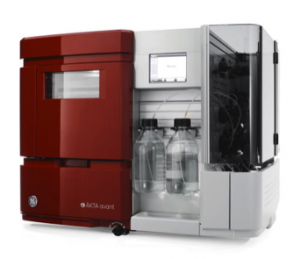
There are different scales of prep HPLC that are defined by the amount of sample being purified. Laboratory-scale HPLC systems are typically used to separate g to gram quantities. Key applications include the isolation of enzymes, biologics, natural products, reference samples or pharmaceutical compounds for toxicology screens. Industrial-scale HPLC systems are used to separate kilogram quantities for valuable pharmaceutical products.
What do you think?
How is HPLC a part of your research? Is there a specific chromatography technique you’d like us to uncover? Feel free to start the discussion below in Discussions!
Copyright © 2018 scienceboard.net






